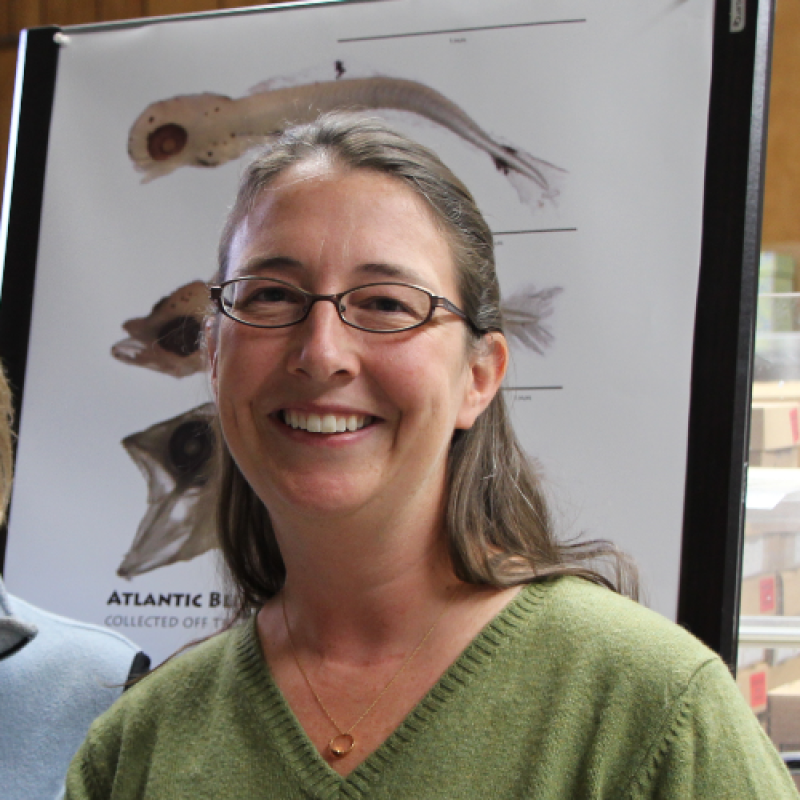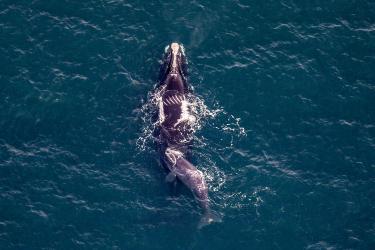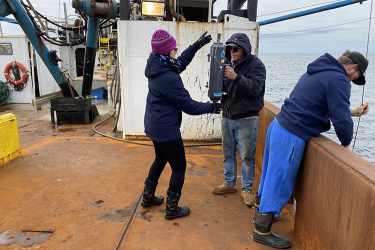I was waiting at the dock.
I could feel the wind shake my car.
I could see 3-foot seas in the protected harbor.
I pondered the small boat that sits 18 inches above the water line and would transfer us to a ladder to climb onto NOAA Ship Henry B. Bigelow.
I thought to myself… welcome back, Winter EcoMon.
We set out on the first Winter Ecosystem Monitoring Survey—EcoMon—since 2017! For 6 days, we called the Bigelow and the northwest Atlantic Ocean our home. Our team of researchers collected samples from southern New England to the Gulf of Maine during one of the most demanding and in-demand times to collect marine samples.
We’re Going to Need a Fast Response Boat
But first, we had to get onto the boat. We delayed the transfer a couple hours to wait for the winds to die down. A Coast Guard Fast Response boat ended up bringing us to the Bigelow. Everyone and everything arrived safely. We still had to climb the ladder.
No Hibernating Here!
It was winter in New England. If you looked out your window, it would have been easy to imagine the whole northern hemisphere was asleep. Plants and animals, even some humans, had hunkered down for the coldest, darkest months of the year. But at sea, winter is far from calm—this is a time of rapid change, fish spawning, bird and whale migrations, and winter storms!
Winter is unfortunately undersampled despite the data being highly sought after! With only 6 sampling days, we had to streamline our mission a bit. This survey covered most of the southern New England region and Cape Cod Bay.








